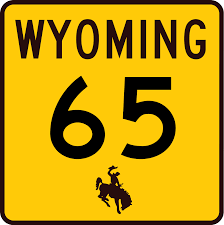Exploring Wyoming: The Beauty and Significance of the Equality State

Introduction
Wyoming, often referred to as the Equality State, holds a significant place in the American landscape. Known for its breathtaking natural beauty, including Yellowstone National Park and Grand Teton National Park, Wyoming attracts millions of visitors each year. The state’s unique combination of natural wonders, rich history, and vibrant culture makes it an important area for both tourists and residents. In light of recent developments, understanding Wyoming’s current challenges and opportunities is vital for anyone interested in America’s western frontier.
Key Features and Attractions
Wyoming is renowned for its vast open spaces and stunning geological formations. Yellowstone, the first national park in the world, spans a significant portion of northwest Wyoming and features geothermal wonders such as Old Faithful geyser as well as diverse wildlife, including bison and grizzly bears. Meanwhile, the Teton Range offers adventurers world-class hiking and skiing options. The state is also home to historical landmarks like Fort Laramie, which played a pivotal role during the westward expansion of the United States.
Current Trends and Developments
Recently, Wyoming has seen an increase in outdoor tourism, spurred on by the global pandemic. As people seek safer vacation options that offer social distancing, outdoor destinations like those in Wyoming have become more appealing. According to the Wyoming Office of Tourism, there has been a surge in visitor numbers, especially in summer 2023, with a reported 14% increase in visitation compared to previous years. This boom benefits the local economy, creating jobs and breathing new life into small communities.
However, with these developments come challenges. Environmental concerns are on the rise as more visitors flock to natural areas, risking damage to ecosystems. Furthermore, the state’s reliance on traditional industries, such as coal mining, is being reassessed as renewable energy sources grow in popularity and demand. The local government is actively working to balance tourism growth with sustainable practices to ensure that Wyoming’s natural beauty is preserved for future generations.
Conclusion
Wyoming stands as a microcosm of the American West, embodying both the beauty and the challenges faced by many states today. With its treasured parks and rich historical significance, the state attracts those seeking adventure and a deeper connection to nature. As Wyoming navigates the current tourism boom and environmental considerations, it is clear that the future holds vast potential. The ongoing efforts to promote responsible tourism and sustainable practices will be crucial for maintaining the state’s unique character and ensuring its natural wonders endure. For anyone looking to explore the majesty of the American landscape, Wyoming remains an unrivaled destination full of promise.









